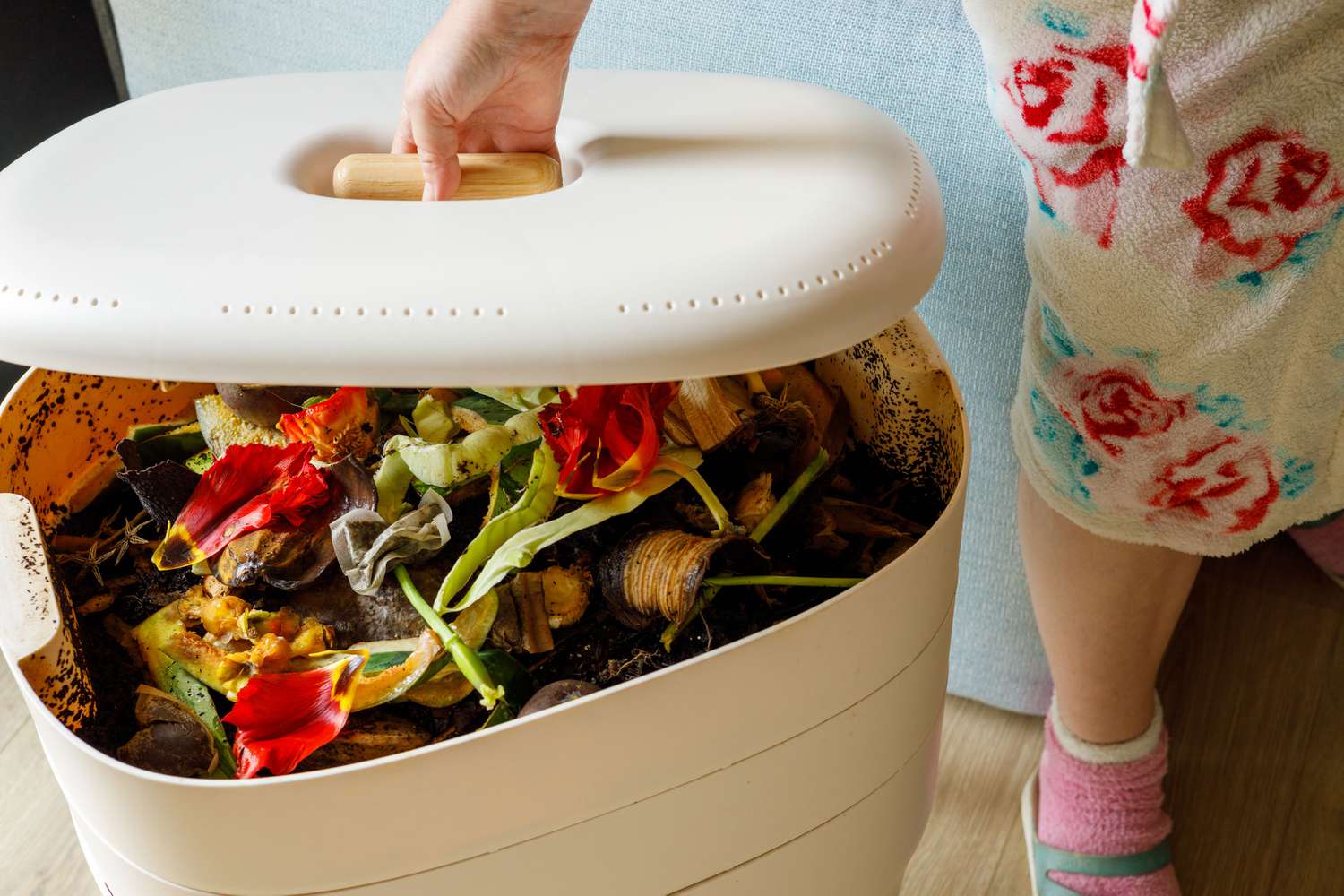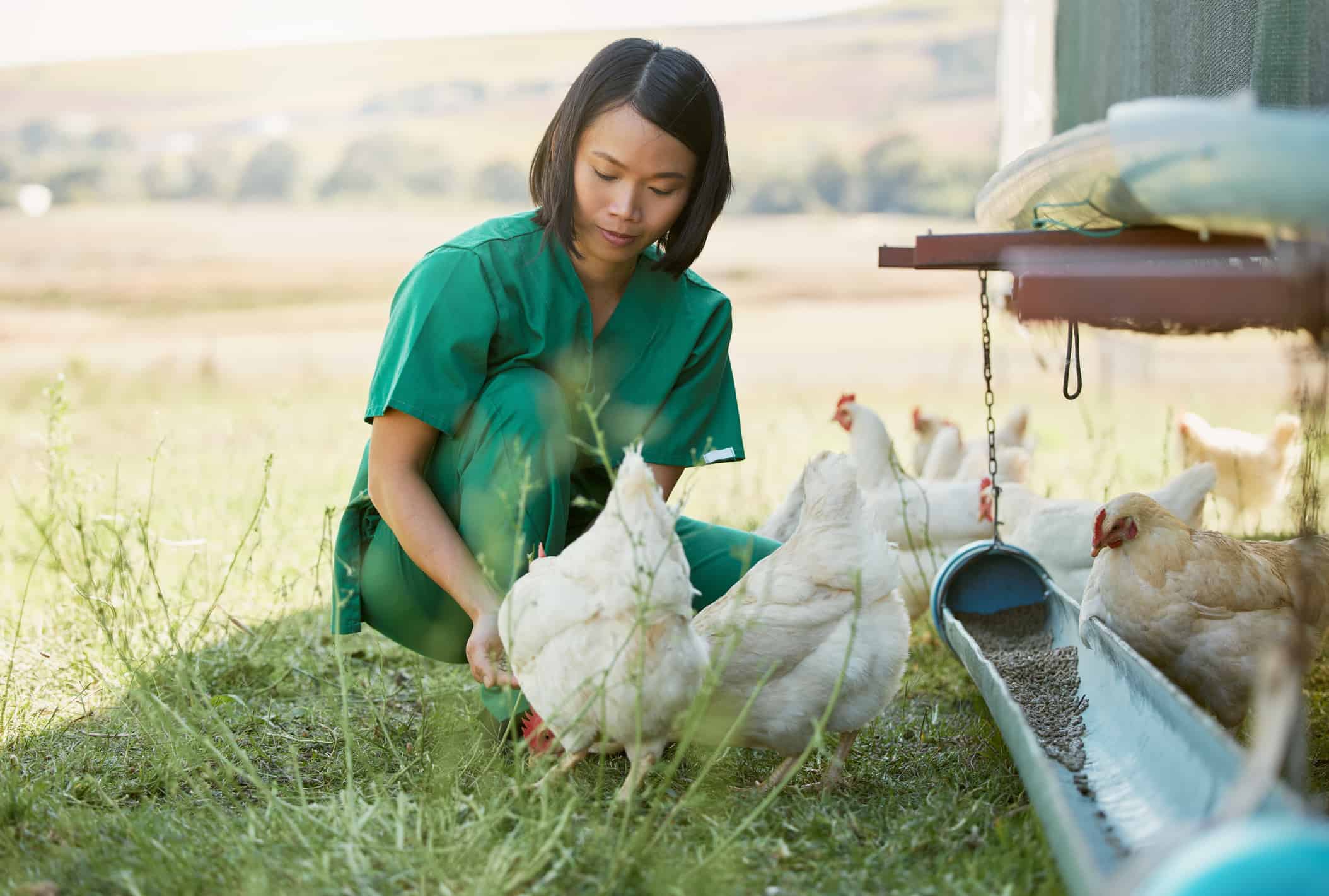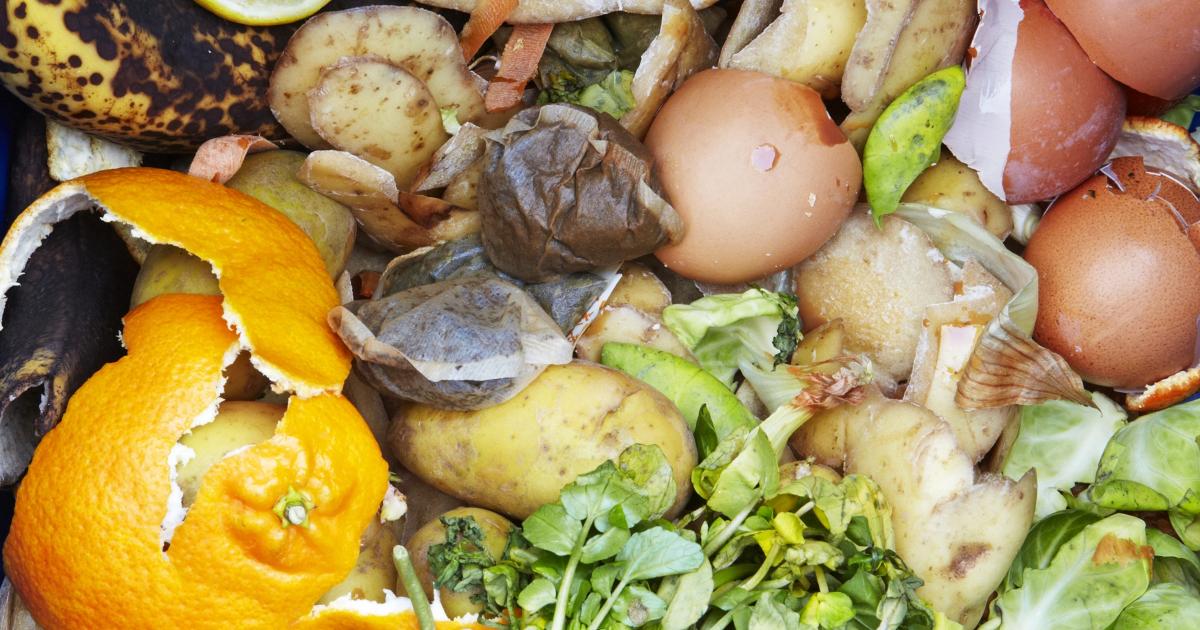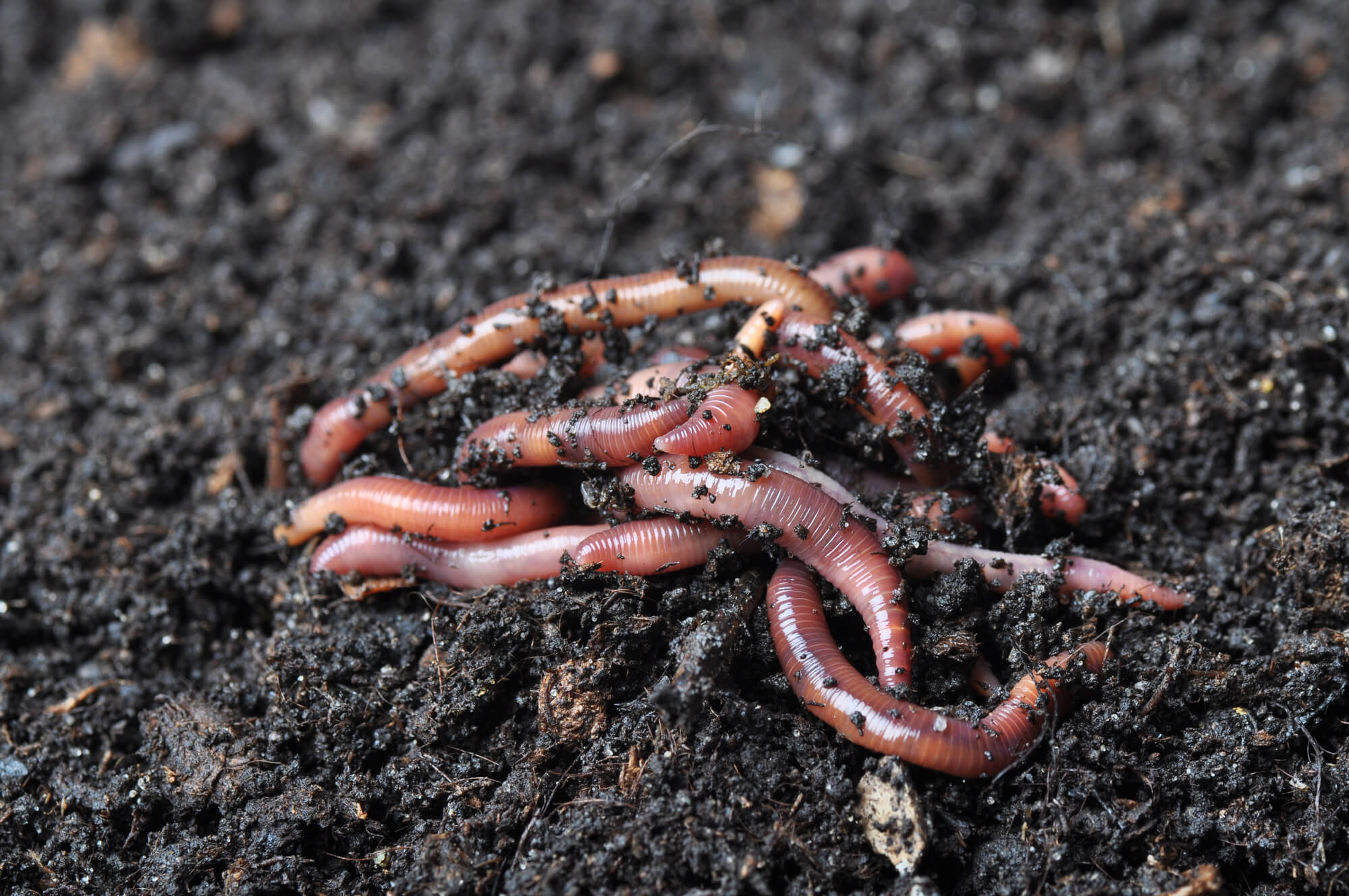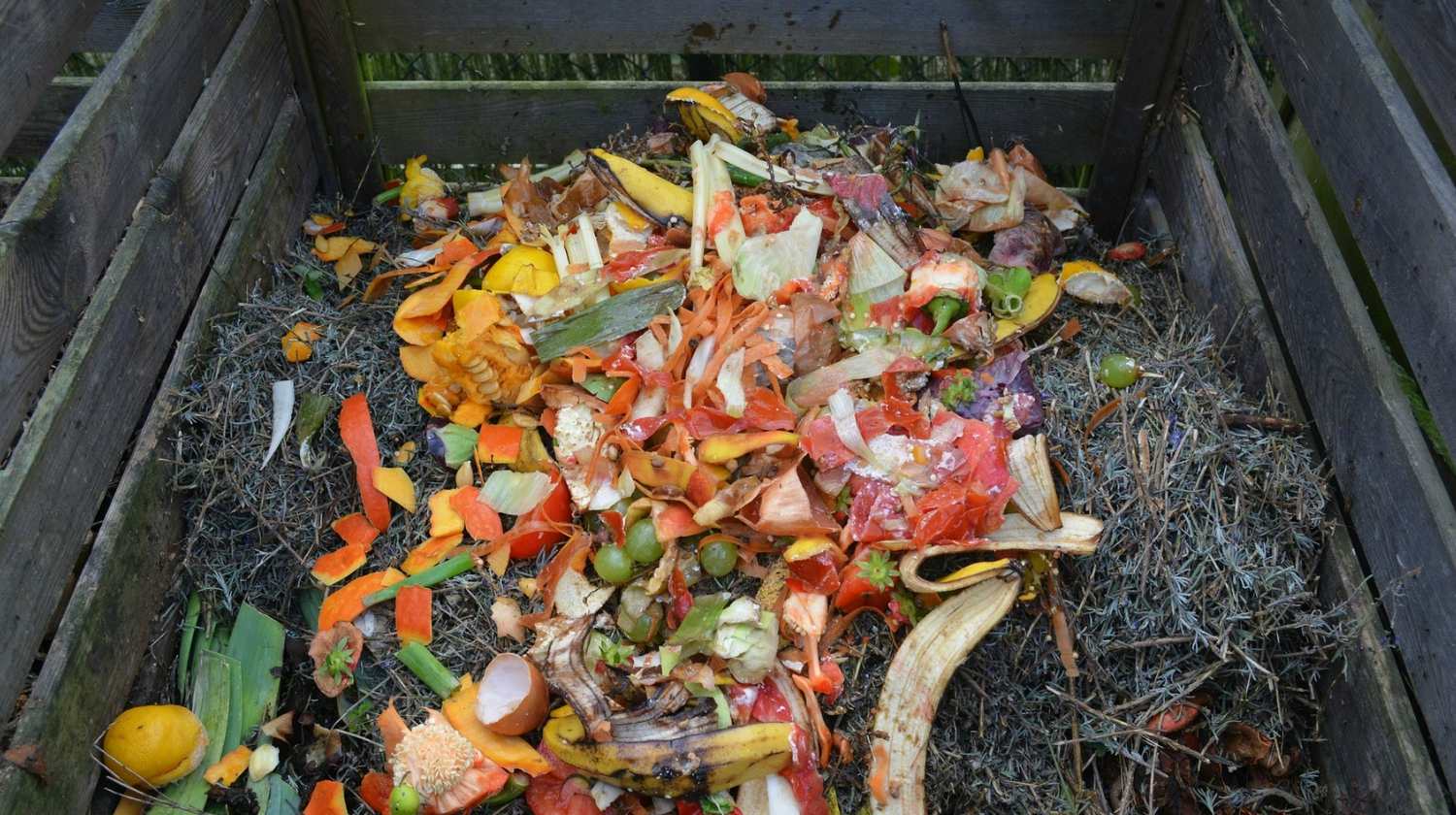Home>Gardening Techniques>DIY Projects>What Should I Feed Compost Worms


DIY Projects
What Should I Feed Compost Worms
Modified: February 9, 2024
Discover the best DIY projects for feeding compost worms and optimizing your composting process. Learn how to create nutritious meals for your compost worms and achieve maximum efficiency.
(Many of the links in this article redirect to a specific reviewed product. Your purchase of these products through affiliate links helps to generate commission for Chicagolandgardening.com, at no extra cost. Learn more)
Table of Contents
Introduction
Compost worms, also known as red wigglers or Eisenia fetida, are incredible creatures that play a vital role in the process of composting. These small but mighty worms are able to consume organic waste and transform it into nutrient-rich worm castings, which are highly beneficial for plants and gardens.
If you’re interested in DIY projects and want to improve your sustainability efforts, learning how to feed compost worms is a crucial first step. But before we dive into the specifics of their diet, let’s take a closer look at these fascinating creatures and why they are so important in the world of composting.
Compost worms are a species of earthworms that thrive in a controlled environment, such as a worm bin or vermicompost system. Unlike garden worms, which prefer to burrow deep into the soil, compost worms are surface dwellers and thrive in the organic matter found in compost heaps.
These worms have a voracious appetite and can consume large amounts of organic waste. As they feed, they break down the waste through a combination of digestion and microbial activity, which ultimately leads to the creation of nutrient-rich worm castings.
Feeding compost worms not only helps reduce organic waste that would otherwise end up in landfills but also produces a valuable soil amendment that can enhance the health and fertility of your plants. It’s a win-win situation for both you and the environment.
In this article, we will guide you through the process of feeding compost worms effectively. We’ll discuss the suitable foods for compost worms, as well as the foods to avoid. We’ll also delve into the importance of balancing their diet and the necessary steps to maintain a healthy worm bin. So, let’s get started on this DIY journey to better composting!
Understanding Compost Worms
Before we dive into the specifics of feeding compost worms, it’s important to have a basic understanding of these incredible creatures. Compost worms, also known by their scientific name Eisenia fetida, are a species of earthworms that are highly efficient at decomposing organic matter.
These worms have a unique ability to consume and break down organic waste, such as kitchen scraps and garden debris, through their specialized digestive system. Unlike other types of earthworms, compost worms are surface dwellers, meaning they prefer to live and feed in the top few inches of organic material.
Compost worms typically have a reddish-brown color and a slender body that ranges from 2-4 inches in length. They have a high reproductive rate, with each worm being able to produce an average of 2-3 cocoons per week. These cocoons contain multiple baby worms that hatch and grow into mature worms within a few months.
One of the key characteristics of compost worms is their ability to thrive in a controlled environment, such as a worm bin or vermicompost system. These systems provide the perfect conditions for compost worms to live and reproduce.
The ideal temperature range for compost worms is between 55-77 degrees Fahrenheit (13-25 degrees Celsius). They prefer moist conditions, with a bedding material that is moist but not overly wet. Proper ventilation is also important to prevent the buildup of harmful gases and to ensure an oxygen-rich environment for the worms.
Compost worms are not only efficient waste processors, but they also help improve the quality of the resulting compost. As they consume organic matter, they excrete nutrient-rich worm castings, also known as vermicompost. These castings are highly beneficial for plants and gardens, providing essential nutrients and microbial activity that promote healthy growth.
Understanding the biology and behavior of compost worms is essential for successful vermicomposting. By providing them with the right conditions and a suitable diet, you can create an optimal environment for these amazing creatures to thrive and produce high-quality compost.
Proper Feeding Tips
Feeding compost worms may seem like a straightforward task, but there are some important guidelines to keep in mind to ensure their health and productivity. By following these proper feeding tips, you can maximize the effectiveness of your vermicomposting system:
- Start small: When introducing new food to your worm bin, it’s best to start with small quantities. This allows the worms to adjust to the new food source and prevents any excess waste from overwhelming the population.
- Chop or blend food scraps: Compost worms have small mouths and prefer smaller food particles. Chop or blend your kitchen scraps into small pieces to make it easier for the worms to consume.
- Bury the food: To prevent fruit flies or odors, bury the food scraps in the bedding material. Create a hole in the bedding, place the food scraps inside, and cover them with more bedding.
- Space out feedings: Avoid overfeeding your worms by spacing out your feedings. Wait until the previous food has been mostly consumed before adding new scraps. This helps maintain a balance in the worm bin and prevents the accumulation of excess waste.
- Maintain moisture levels: Compost worms need a moist environment to thrive. Ensure that the bedding material is consistently damp, similar to a wrung-out sponge. Regularly monitor the moisture levels and add water as needed.
- Rotate feeding spots: Instead of always placing food in the same spot, rotate the feeding areas in the worm bin. This encourages the worms to distribute evenly and prevents overcrowding in one area.
- Avoid adding oily or fatty foods: Oily or greasy foods can create an inhospitable environment for compost worms. Avoid adding foods like meat, dairy products, or oily leftovers, as they can attract pests and create unpleasant odors.
- Monitor the worm bin: Regularly check the condition of your worm bin, including the moisture levels, temperature, and worm activity. This allows you to identify any potential issues and make adjustments to ensure the worms are thriving.
By following these proper feeding tips, you can create a healthy and productive environment for your compost worms. Remember, maintaining a balanced diet and providing a suitable habitat are key to their success in breaking down organic waste and producing nutrient-rich worm castings.
Suitable Foods for Compost Worms
Compost worms have a diverse palate and can consume a wide variety of organic materials. However, certain foods are more suitable for their diet, as they provide the essential nutrients and balance necessary for optimal worm health. Here are some of the most suitable foods for compost worms:
- Fruit and vegetable scraps: Compost worms love a variety of fruit and vegetable scraps such as apple cores, banana peels, cucumber ends, and carrot tops. These provide essential nutrients and moisture for the worms.
- Coffee grounds and tea bags: Worms are a fan of coffee grounds and used tea bags. These acidic materials provide nitrogen and help balance the overall pH of the worm bin.
- Plant-based kitchen waste: Instead of throwing away plant-based kitchen waste, feed it to your compost worms. This includes things like pea pods, corn husks, lettuce leaves, and other vegetable trimmings.
- Crushed eggshells: Adding crushed eggshells to your worm bin provides a source of calcium which helps maintain healthy worm reproduction and is also important for the structure of the worm’s digestive system.
- Shredded newspaper and cardboard: Worms love bedding materials made from shredded newspaper and cardboard. They consume this material as a source of carbon and also use it to build their burrows.
- Leaves and yard waste: Fallen leaves, grass clippings, and other yard waste can be beneficial for compost worms. Be sure to shred or chop them before adding them to the worm bin to aid in the decomposition process.
- Vegetable and fruit peels: Don’t throw away those vegetable and fruit peels – compost worms will gladly feast on them. Be sure to wash them thoroughly before adding them to the worm bin to remove any pesticides or residues.
- Herbivore manure: While not commonly accessible for everyone, herbivore manure such as cow or horse manure can be added to the worm bin. Make sure the manure has been aged or composted before introducing it to the worms.
Remember to always chop or blend the food scraps into small pieces before feeding them to the worms. This helps speed up the decomposition process and makes it easier for the worms to consume. Additionally, it’s important to introduce new foods gradually to prevent any shock to the worm bin ecosystem.
By providing a balanced diet of these suitable foods, you can ensure that your compost worms have all the necessary nutrients they need for healthy growth and optimal composting. Happy worms mean happy composting!
Foods to Avoid Feeding Compost Worms
While compost worms have a diverse diet, there are certain foods that should be avoided as they can be harmful to the worms and disrupt the balance of the worm bin. By steering clear of these foods, you can ensure the health and longevity of your compost worm population. Here are some foods to avoid feeding compost worms:
- Meat, fish, and dairy: Compost worms are not equipped to handle animal proteins and fats. Avoid feeding them meat scraps, fish bones, cheese, or any other dairy products. These foods can create a foul odor, attract pests, and potentially harm the worms’ digestive system.
- Oily or greasy foods: Foods that are heavily greased or contain oils, such as fried foods or salad dressings, are too difficult for compost worms to digest. These foods can turn rancid in the worm bin, leading to unpleasant odors and potentially harmful conditions for the worms.
- Citrus fruits: While compost worms can consume small amounts of citrus fruits, it’s best to avoid feeding them excessive quantities. Citrus fruits contain high levels of acidity that can harm the worms and disrupt the pH balance of the worm bin.
- Spicy or seasoned foods: Spices, seasonings, and hot peppers should be kept out of the worm bin. These types of foods can irritate the worms’ delicate skin and make the bin less welcoming for their habitation.
- Onions and garlic: While onions and garlic may be safe for compost worms in small amounts, excessive quantities can create an unfavorable environment for the worms. These foods can give the worm castings an unpleasant odor and may even repel the worms.
- Large amounts of bread or grains: While small amounts of bread or grains can be consumed by compost worms, avoid feeding them large quantities. These foods can quickly become moldy and attract pests, leading to potential harm for the worms.
- Processed foods: Avoid feeding compost worms processed or packaged foods, as they often contain preservatives, additives, and chemicals that can be harmful to the worms and hinder their ability to break down organic matter.
- Poisonous or toxic plants: Be cautious about introducing plants or plant parts that are known to be poisonous or toxic. Examples include plants from the nightshade family like tomatoes, potatoes, and eggplants.
It is essential to maintain a healthy and balanced diet for compost worms to thrive and produce nutrient-rich worm castings. By avoiding these foods, you can ensure the overall well-being of your compost worms and maintain a harmonious vermicomposting system.
Balancing the Compost Worm Diet
Just like humans, compost worms require a balanced diet to maintain good health and productivity. Balancing their diet ensures that they receive a proper mix of nutrients and microorganisms necessary for optimal composting. Here are some key factors to consider when balancing the compost worm diet:
Carbon to nitrogen ratio: The carbon to nitrogen ratio, often referred to as C/N ratio, is crucial for a well-balanced vermicompost system. A balanced C/N ratio provides the right amount of energy and nutrients for compost worms. Aim for a ratio of roughly 25:1 to 30:1, with slightly more carbon-rich materials than nitrogen-rich materials.
Carbon-rich materials: Carbon-rich materials, also known as “browns,” include shredded newspaper, cardboard, dry leaves, straw, and wood chips. These materials provide a source of energy for the worms and help maintain moisture levels within the worm bin.
Nitrogen-rich materials: Nitrogen-rich materials, often referred to as “greens,” are typically fresh and moist kitchen scraps, grass clippings, coffee grounds, and vegetable peels. These materials provide essential nutrients for the worms and help generate heat within the worm bin.
Moisture levels: Proper moisture levels are essential for compost worms. They require a damp environment, similar to a wrung-out sponge, to survive and digest their food. Monitor the moisture levels regularly and make sure the bedding material is consistently moist, but not overly wet. Add water or dry bedding material as needed to maintain the proper moisture balance.
Microbial activity: Compost worms rely on beneficial microorganisms to break down organic matter. These microorganisms help to decompose the food scraps, making them more accessible for the worms to consume. Maintaining a diverse and active microbial community is essential for the overall health of the worm bin and the worms themselves.
Biodiversity: To ensure a well-rounded diet, provide a diverse range of organic materials for the compost worms. This includes a variety of fruits, vegetables, and plant-based kitchen waste. The more diverse the diet, the greater the range of nutrients the worms will receive.
Feeding frequency: Properly balancing the compost worm diet also involves controlling the frequency of food additions. Avoid overfeeding the worms to prevent excess waste buildup and potential issues such as odors or pests. Monitor the worms’ consumption patterns and adjust the feeding frequency accordingly.
By paying attention to the carbon to nitrogen ratio, incorporating a mix of carbon-rich and nitrogen-rich materials, maintaining appropriate moisture levels, ensuring microbial activity, promoting biodiversity, and controlling feeding frequency, you can successfully balance the compost worm diet. This balance will result in nutrient-rich worm castings and a thriving vermicompost system.
Maintaining the Worm Bin
Maintaining a healthy and thriving worm bin is crucial for the well-being of your compost worms and the success of your vermicomposting system. Proper maintenance ensures that the worms have an optimal environment to live, reproduce, and break down organic waste efficiently. Here are some key steps to follow when maintaining the worm bin:
Regular monitoring: Regularly check on the condition of your worm bin to ensure everything is in order. This includes monitoring moisture levels, temperature, and the overall health and activity of the worms. Look out for any signs of distress or potential issues.
Adjusting moisture levels: Compost worms require a moist environment to thrive. If the bedding material becomes too dry, mist it with water or add moistened bedding material to increase the moisture content. Conversely, if the bedding is overly wet, add dry bedding materials or adjust the ventilation to promote airflow and help balance the moisture levels.
Balancing the bin: Ensure that the carbon to nitrogen ratio remains balanced by adding equal amounts of carbon-rich and nitrogen-rich materials. This helps provide the worms with a well-rounded diet and prevents any issues with odors or excess waste accumulation.
Harvesting worm castings: Periodically harvest the worm castings from the bin. The castings are a valuable nutrient-rich soil amendment that can be used in your garden or potted plants. Follow proper harvesting techniques to avoid disturbing the worms and their habitat.
Managing pests: Keep an eye out for pests such as fruit flies or mites. If you notice an infestation, reduce the moisture levels and bury new food scraps to discourage the pests. You can also introduce beneficial nematodes or diatomaceous earth to help control pest populations, if necessary.
Allowing for ventilation: Proper ventilation is crucial to maintain a healthy worm bin. Make sure there is enough airflow to prevent the buildup of harmful gases and promote oxygen circulation. You can achieve this by adjusting the lid or adding ventilation holes to the bin.
Handling temperature fluctuations: Compost worms thrive within a temperature range of 55-77 degrees Fahrenheit (13-25 degrees Celsius). If the bin becomes too hot or too cold, consider relocating it to a more suitable area or use insulation materials to regulate the temperature.
Adding bedding materials: Continue to add fresh bedding materials to the bin as needed. This helps maintain a comfortable environment for the worms and provides additional carbon-rich materials for them to consume.
By following these maintenance practices, you can create an ideal environment for your compost worms to thrive and ensure the long-term success of your vermicomposting system. Consistent monitoring and adjustment are key to maintaining a healthy and productive ecosystem in your worm bin.
Troubleshooting Common Issues
Even with careful maintenance, composting with worms may encounter some common issues along the way. Fortunately, most of these issues are relatively easy to troubleshoot and resolve. Here are some common problems you may encounter when vermicomposting and how to address them:
Odors: Foul odors coming from the worm bin often indicate an imbalance in the bin. To address this issue, adjust the carbon to nitrogen ratio by adding more carbon-rich materials and stopping the addition of any odorous food scraps. Ensure the bedding is properly moistened and turn the materials to promote aeration.
Fruit flies and other pests: Fruit flies can be a common nuisance in worm bins, especially when there are overripe fruits or exposed food scraps. To handle this issue, bury food scraps beneath the bedding, avoid overfeeding, and make sure the bin is properly sealed to prevent the pests from entering. Introducing beneficial nematodes or diatomaceous earth can help control pest populations as well.
Excessive moisture: If the worm bin becomes overly wet, it may lead to a lack of oxygen and potential harm to the worms. To address this problem, add more dry bedding materials to soak up the excess moisture and improve airflow within the bin. Make sure to monitor the moisture levels carefully and adjust as needed.
Slow decomposition: If the organic waste in the bin is not decomposing as quickly as expected, it may indicate a lack of microbial activity or an improper carbon to nitrogen ratio. Ensure the bin has a diverse range of food scraps, including both greens and browns. If microbial activity appears inactive, consider adding compost or garden soil to introduce beneficial microorganisms.
Worm escape: Occasionally, some worms may try to escape the bin, especially if conditions are not suitable or there is overcrowding. Make sure the bin is properly sealed to prevent escapes. Check if the bedding is too acidic or the moisture levels are not suitable. If overcrowding is an issue, consider dividing the worm population into separate bins or finding a larger container.
Unusual worm behavior: If you notice unusual behavior in the worms, such as lethargy, clustering, or discoloration, it may indicate a problem. Assess the conditions of the bin, including moisture levels, temperature, and food availability. Adjust as necessary to create a more suitable environment for the worms. If the issue persists, consider consulting with experienced vermicomposters or local agricultural extension offices for additional guidance.
Troubleshooting common issues in vermicomposting is an ongoing process. By staying proactive and addressing problems promptly, you can maintain a healthy and productive worm bin and ensure the success of your composting efforts.
Harvesting Worm Castings
Harvesting worm castings is one of the most rewarding aspects of vermicomposting. The nutrient-rich worm castings, also known as vermicompost, are a valuable resource for enriching your garden beds, potted plants, or seedlings. Harvesting the castings allows you to utilize the fruits of your compost worms’ labor. Here’s how to go about it:
1. Prepare for harvesting: Before harvesting, stop adding new food scraps to the worm bin for a few weeks. This allows the worms to finish processing the remaining materials and helps minimize the number of worms in the harvested castings.
2. Create separation zones: To encourage the worms to migrate away from the finished castings, create separation zones in the bin. One common method is to push the castings to one side of the bin and add fresh bedding and food to the opposite side. Over time, the worms will migrate towards the new food, leaving behind the harvested castings.
3. Harvest in batches: To ensure you do not harm the worms during the harvesting process, harvest the castings in batches. Start by gently scooping out a section of the castings using a small gardening tool or your hands. Avoid disturbing the worms as much as possible.
4. Separate the worms: Once you have removed a batch of castings, place it on a large piece of plastic or a tarp. Spread the castings in a thin layer and let them sit in indirect sunlight. The worms will naturally migrate away from the light, allowing you to separate them from the castings easily.
5. Repeat the process: After the worms have migrated to one side of the separated castings, remove them and return them to the worm bin. Place the remaining castings in a container for use in your garden or store them in a dry and cool location. Repeat the process with the next batch until all the castings have been harvested.
6. Add fresh bedding: Once the castings have been harvested, replenish the worm bin with fresh bedding materials to create a welcoming environment for the worms to continue their work.
7. Utilize the worm castings: The harvested worm castings are an excellent soil amendment. You can apply them directly to your garden beds, mix them with potting soil for potted plants, or use them as a top dressing around existing plants. The castings provide valuable nutrients, improve soil structure, and enhance moisture retention.
Remember, harvesting worm castings is an ongoing process as your worm bin continues to produce more castings over time. By practicing regular harvesting, you can keep your worm bin in a healthy and balanced state, while reaping the benefits of nutrient-rich worm castings for your plants and garden.
Conclusion
Feeding compost worms is a rewarding and sustainable way to manage organic waste while creating nutrient-rich worm castings. By understanding the needs and preferences of compost worms, you can create a thriving vermicomposting system that benefits both the environment and your plants.
In this article, we explored the importance of understanding compost worms and how they contribute to the composting process. We discussed proper feeding tips, including starting small, chopping food scraps, burying the food, and maintaining moisture levels. We also identified suitable foods for compost worms, such as fruit and vegetable scraps, coffee grounds, and shredded newspaper, while highlighting the foods to avoid, including meat, dairy, and oily foods.
Furthermore, we emphasized the significance of balancing the compost worm diet by considering the carbon to nitrogen ratio, moisture levels, microbial activity, and biodiversity. We also provided guidance on maintaining the worm bin, troubleshooting common issues, and the process of harvesting worm castings.
By actively participating in vermicomposting and following the guidelines outlined in this article, you not only reduce your ecological footprint but also produce a valuable soil amendment for your garden. Compost worms are truly remarkable creatures that transform organic waste into nutrient-rich castings, improving soil fertility and promoting plant growth.
Remember to approach vermicomposting as a continual learning experience. Monitor and adjust the conditions of your worm bin as needed, paying attention to the needs of your compost worms and the overall health of the vermicomposting system. With time and practice, you will become adept at creating a harmonious environment for your compost worms and reaping the benefits of their hard work.
So, roll up your sleeves, gather your kitchen scraps, and embark on the journey of vermicomposting. Your compost worms will thank you, and your garden will flourish with healthier, more vibrant plants.

